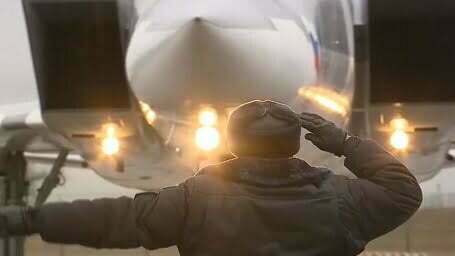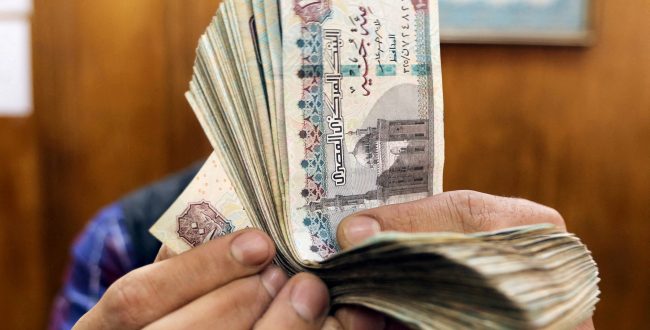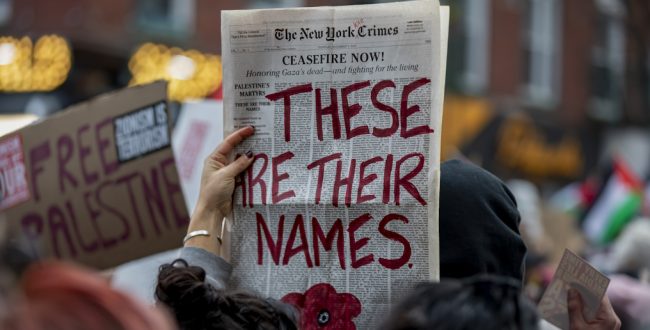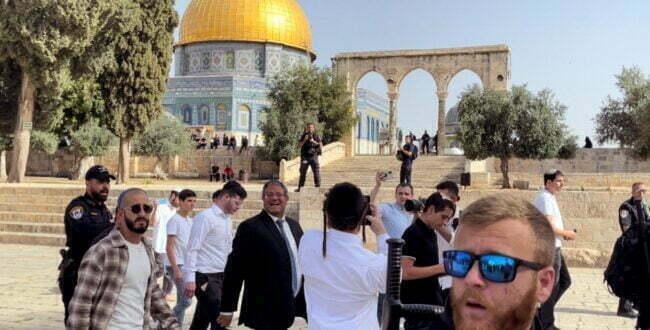The citizens of Syria
For obvious reasons, it is hard to estimate the extent of support for the continuation of the war among Syrians. However, several studies conducted in areas currently under rebel control and among Syrian refugees, coupled with accounts of reality in regime-controlled areas, offer a reliable glimpse into the feelings of Syrian citizens. In general, it appears that besides two clear camps that favor one of the warring factions, many Syrians support neither side. This group, which includes many middle class urbanites who reject both the regime’s cruelty and the rebels’ extremism, is often called “the silent majority”. They support an arrangement that would bring an end to the fighting. It is hard to estimate the size of this group and whether it warrants being called a majority.
Opponents Regime
A 2013 survey conducted in the districts of Aleppo and Idlib in northern Syria, where the population is exposed to daily bombing and shelling by the regime, found significant civilian opposition to negotiation with the Assad regime. Some 35% of respondents supported negotiations without a ceasefire in order to end the fighting, while some 54% supported negotiations with the regime only coupled by an immediate ceasefire. However, some 60% of respondents were in favor of continuing the war without negotiations.
In a survey conducted among Syrian refugees in Turkey several months earlier, just over 70% of respondents supported unconditional negotiations with the regime, and only some 37% were in favor of continuing the war with no negotiation. The disparity between the positions of refugees and those of civilians residing mere dozens of kilometers away, within Syria, can be explained by the refugees’ desire to go back home – any home – while those who remain in Syria wish to ensure a different future regime .
Regime Supporters
The Assad regime does not permit independent researchers to travel in the areas under its control and interview the population. However, there are various indications that the regime’s support base within Syria is growing increasingly weary of the war. This group currently consists almost entirely of religious minorities – Alawites, Christians, and Druze. The telling signs include broad absenteeism, which has compelled the regime to carry out arrests and forced conscription, and demonstrations against the regime and these actions. Among Druze, for example, most military-age men are dodging the draft .
The mass desertion, together with the death or injury of tens of thousands of soldiers, has left Assad’s army with only 150,000 men , as opposed to 325,000 before the war. The lack of manpower has forced the regime to conscript youths who finished their military service into the militias fighting alongside the army, mostly as part of the National Defense Forces (NDF). The militia fighters are paid 15,000-30,000 Syrian lira a month (100-150 USD) – a good salary in unemployment-riddled Syria. They are also exempted from military service and promised that unlike regular soldiers, they will not be sent to the front but will serve close to home. The regime also gives them a free hand to loot civilian homes in neighborhoods they recapture from rebel forces and overlooks checkpoint bribes. In practice, due to the ongoing lack of personnel, the militia fighters are sent to the front after all . The regime has also recently begun to forcefully enlist some of them into the army.
The regime stopped publishing the fatality figures among its forces back in 2012, probably due to fears that it would affect morale. However, the Syrian Observatory for Human Rights used sources throughout Syria to count some 44,000 Syrian soldiers killed by December 2014 , some 10% of them officers , and an additional 29,000 deaths among the militias fighting for the regime.A source within the Syrian army told the organization in August 2014 that the regime forces had actually suffered much higher losses : 75,000 soldiers and some 40,000 militia fighters. According to the source, 70% of those killed were Alawites (some 80,000 fighters). As a result, “ many describe rural Alawite villages as virtually gutted of military-age men ”.
To dodge the draft, military-age young men hide from the authorities, use smuggling networks to escape to neighboring countries, or relocate to areas controlled by the opposition. In response, the regime has erected checkpoints in which the names of intended military conscripts for regular and reserve duty are checked, and has even begun to forcefully enlist minors under the age of 18. Recently, the regime also instigated raids on private homes, coffee shops, universities, and buses. The detainees undergo short training and are sent to the front within several days of their arrest. Alawites and Druze – groups that form the regime’s support base – have demonstrated against the forces sent to carry out these arrests and even fired at them. Recently, Alawite women began manning checkpoints at the entrances to their villages to prevent regime forces from reaching and apprehending their male relatives. Many Alawite villagers in the coastal region are furious that their sons are being sent to the front while they suffer poor economic conditions, especially as Alawites who are close to the leadership continue to enjoy a relatively good quality of life and personal safety in Damascus.
When the uprising was still popular and unarmed, many among Syria’s minorities supported the Ba’ath regime, as it had improved their quality of life and social status. They also supported security force personnel from their respective groups who took part in killing and in repressing demonstrations. When some of the demonstrators and defectors from Assad’s army began using weapons against the security forces, and especially when Islamists joined the rebel ranks after several months of fighting, the minorities desperately clung to the regime, believing that it would guarantee their survival , despite their criticism of Assad’s preferring members of his own tribe, a sub-group within the Alawite sect. Although many populations that support the regime currently feelthat they are being used as cannon fodder rather than provided protection, they choose for the most part to remain silent. Alawites who speak out against the regime are arrested just like the Sunni opposition, and face torture and extrajudicial killing. It appears that they would support a political resolution that would guarantee the safety of minorities in Syria while removing Assad from power.
The regime, the rebels, and ISIS
While it appears that many of the regime’s soldiers are fighting against their will, the army is determined to continue the war and subdue the rebellion (the regime has been promising a speedy suppression of the uprising since its first days). The regime may have lost control over most of Syria’s territory, but it is fighting on several fronts simultaneously and seems unwilling to relinquish its remaining strongholds in the outlying districts of Deir a-Zour, Hasskeh, and Idlib. In order to remain in power, Assad has given up effective sovereignty over most areas officially under his control by leaving unprecedented leeway for Iran, Hizballah, Shi’ite militias from Iraq and Afghanistan, and Syrian militias that are fighting for the regime but often act in a way that runs counter to its interests.
For instance, the militias loot homes, violently rob civilians , and even abduct them – all within communities that support the regime and enlist to fight on its behalf. The regime has also destroyed the Syrian economy , guaranteeing that if it remains in power, Assad will rule over ruins and continue to depend on Iran and Russia. The slogan that his supporters spray-paint on walls in the towns and neighborhoods they capture – “ Assad or we burn the country ” – apparently speaks of the current mood in the presidential palace.
The regime’s conduct in the peace negotiations hosted by the international community in Geneva, and in several local ceasefire initiatives, indicates that it will only accept a peace agreement that keeps Assad in power. The Geneva talks ended in failure in early 2014 because the regime refused to discuss any possibility of a transitional government and insisted on focusing only on the problem of “terrorism” in Syria. In the current talks being led by Staffan de Mistura, the UN special envoy for the Syria crisis, the regime repeatedly turned down various suggestions of a ‘freeze’ – a time-limited ceasefire – around Aleppo. De Mistura has already confidentially stated that he will resign unless progress is achieved by May 2015.
In negotiations over specific ceasefires within Syria, the regime demanded total surrender by the rebels, except in outstanding cases. The ceasefires came into effect after the regime blocked neighborhoods or towns controlled by rebel groups, bombed them (including with chemical weapons), and starved their residents. So far, the regime has starved to death more than 500 Syrians and Palestinian-Syrians, about half of them children, mostly in the besieged suburbs of Damascus. In those cases, the residents pressured the rebels to agree to a ceasefire. Time and again, the regime demanded that all weapons be handed over and that the rebels turn themselves in, in exchange for a partial easing of the blockade and letting food and humanitarian aid in for the starving population. While the regime terms these ceasefires “ national reconciliation ”, it has only honored some of its reciprocal commitments , sometimes violating them altogether . De Mistura’s talks over the ‘freeze’ initiative are about to collapse because the regime insiststhat the ceasefire in Aleppo does not include mutual holding of fire, but rather full surrender of the rebels, as it achieved in Homs and on the outskirts of Damascus after starving and shelling the population.
The rebels in Syria are a motley crew, but even the most moderate of them, who wield influence only over parts of southern Syria, refuse to negotiate with Assad’s regime or accept a scenario in which he remains in power. A survey conducted among rebels in northern Syria in the second half of 2013 found that the major reason for civilians joining the rebel forces was exacting revenge from Assad and toppling him. More than 93% of the respondents were in favor of continuing the fighting without negotiating with the regime. As noted above, this position is much less popular among civilians in those areas, and certainly among refugees outside Syria. Only 23% of the rebels supported the idea of an immediate ceasefire.
The Jihadist groups in Syria, which are currently the most effective force combating the regime, rule out any negotiation whatsoever. Accordingly, Jabhat a-Nusra, al-Qaeda’s branch in Syria, repeatedly foiled negotiations over surrendering to the regime on the outskirts of Damascus. The starving population, which pressured more moderate rebels into surrendering, had no effect on Jabhat a-Nusra’s calculations.
ISIS, the organization that now controls about a third of Syria’s territory , has almost no active fronts in the war with the regime, since both sides prefer to focus on fighting the more moderate rebel groups . However, this does not mean that the Assad regime and ISIS will agree to divide Syria between them. ISIS is committed to fighting and gaining more territory to ensure the economic and ideological survival of the “Islamic State” project, and pays little attention to pressure from the population it controls. The regime, meanwhile, is fighting to keep every stronghold it can.
In conclusion, although many Syrians are willing to end their suffering, this desire has not stopped the fighting because both the regime and the rebels refuse a compromise that would acknowledge the other side’s power. The rebels and their supporters demand that Assad be removed from power, while Assad is prepared to retain what is left of his rule even if Syria is destroyed in the process.
A proxy war
The civil war in Syria has become a proxy war between two blocs fighting for regional hegemony and funneling aid and funds to ensure victory for their local ally. The intensive involvement of Iran, Hizballah, and Russia on Assad’s behalf is what changed the course of the war in 2013 . Tens of thousands of Shi’ite militia fighters from Lebanon, Iraq, Iran, and Afghanistan who were sent to Syria by directive of Iran’s Revolutionary Guard, together with Iranian training of some 50,000 Syrian militia fighters , stopped the regime’s territorial hemorrhage, enabling it to go on the offensive for the first time and even achieve occasional successes.
On the other hand, moderate rebels and Islamists are supported by Qatar, Saudi Arabia, and very partially by the US. Jabhat a-Nusra and other Islamist and Salafi groups are supported by private sources in the Persian Gulf and were apparently funded in the past by the Qatari regime . ISIS, which is mostly fighting the rebels, does not need external funding and relies on income from the oil wells it controls (a large part of the oil is sold to Assad’s regime ), protection rackets, a vast taxation network, and selling looted ancient artifacts .
Research on civil wars shows that external intervention often prolongs the war , as is evidently the case with Syria. Without foreign assistance, the rebels would not have gained power and the regime would have crushed them when the armed uprising first began. On the other hand, without Iranian and Russian support, the regime would have lost strategic areas that it now controls.
The situation at present
The war in Syria is currently being fought by three different parties with opposing interests – the rebels, the regime, and ISIS. Each faction is determined to continue fighting despite the suffering and fatigue of the population. In the last year, both the regime and the rebels weakened and the front lines remained quite static from a bird’s eye view. The regime has suffered considerable losses among its forces, difficulty recruiting new fighters, a decrease in external support due to Iran’s economic problems, and withdrawal of the Shi’ite Iraqi militias from Syria in order to fight ISIS in Iraq. The rebels are also suffering from a loss of forces, the need to fight the regime and ISIS simultaneously, many internal divisions, a drop in support from Qatar and Turkey, and an irregular flow of external funds. Consequently, the incessant fighting has not resulted in either side capturing large territories. ISIS, which rapidly gained control over eastern Syria, was stopped in its tracks in late 2014 and was even forced to retreat from areas it had captured in Syria , thanks to collaboration between the Kurds and the US air force.
Without a drastic change in regional circumstances and in external funding of the warring factions, the civil war in Syria is likely to continue for years.
Translator: Michelle Bubis


















